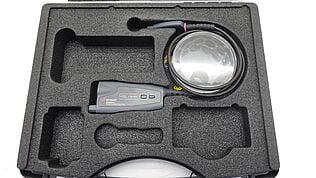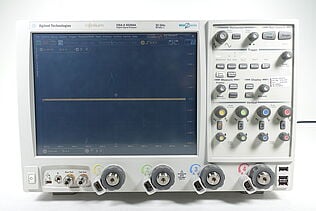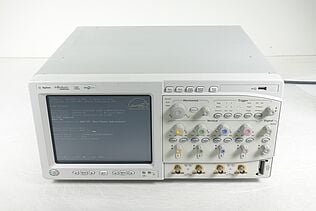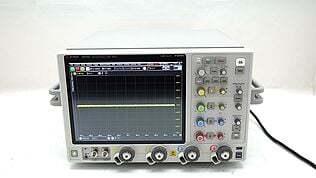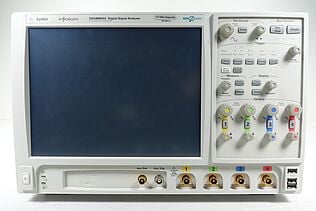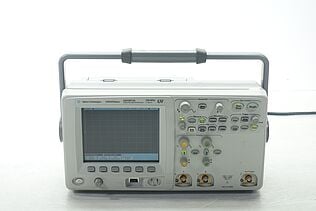- Introduction
- What is a Single Shot?
- How Does Single Shot Work?
- 1. Triggering Mechanism
- 2. Signal Capture
- 3. Storage and Display
- Applications of Single Shot
- Transient Analysis
- Protocol Decoding
- Timing Analysis
- Applications Summary Table
- Challenges and Considerations
- Trigger Stability
- Memory Depth
- Sampling Rate
- Conclusion
- Whenever You’re Ready, Here Are 5 Ways We Can Help You
Ever wondered about those split-second moments in electronics when a signal flashes by and disappears before you can blink? That's where the concept of a single shot comes into play.
Whether you're a seasoned engineer or just curious about how electronics work, understanding what a single shot is and how it functions is key in testing and measurement. So, what exactly is a single shot, and how does it work in electronics?
What is a Single Shot?
In electronics, a single shot refers to the capture of a transient electrical signal using specialized equipment such as oscilloscopes, logic analyzers, or data acquisition systems.
Unlike continuous acquisition, where the instrument samples signals continuously over time, a single shot acquisition occurs only once per trigger event.
| Key Takeaway |
|---|
| Single-shot acquisitions allow engineers to capture transient signals accurately, facilitating detailed analysis and troubleshooting in electronics testing and measurement. |
Empower Your Projects With a Used Keysight Oscilloscope
How Does Single Shot Work?
In electronics testing and measurement, the single shot functionality serves as a crucial tool for capturing elusive transient signals. Understanding how single shot works involves understanding its core components and processes.
1. Triggering Mechanism
At the heart of the single shot process lies the triggering mechanism. This mechanism acts as the catalyst, initiating the acquisition when specific predefined criteria are met.
You can set triggers based on various parameters such as voltage levels, edge transitions, pulse width, or even specific data patterns in digital signals. By defining precise trigger conditions, you can ensure that the instrument captures the desired event accurately.
For example, in a scenario where you need to capture a voltage spike exceeding a certain threshold, they can set the trigger level accordingly. Once the incoming signal surpasses this threshold, the triggering mechanism activates the acquisition process, signaling the instrument to capture a single instance of the signal.
2. Signal Capture
Once triggered, the instrument swiftly captures a single instance of the signal within a specified time window. This snapshot, often referred to as the "single shot capture," preserves the waveform, amplitude, frequency, and other relevant parameters of the signal at that particular moment in time.
This captured data allows you to perform detailed analysis and gain insights into the behavior of the electrical system under test.
3. Storage and Display
Following the signal capture, the captured waveform is stored in the instrument's memory and subsequently displayed on the screen for analysis. You can visually inspect the waveform, zooming in on specific portions to scrutinize details and identify any abnormalities or deviations from expected behavior.
Modern testing equipment provides advanced features for waveform display, including customizable color schemes, measurement cursors, and real-time analysis tools.
These features allow you to perform in-depth analysis, compare multiple waveforms, and extract valuable insights to inform design decisions or troubleshoot issues.

Applications of Single Shot
In electronics testing and measurement, the single shot functionality finds extensive applications across various domains. You can leverage this capability to address a wide range of challenges and requirements, ranging from transient analysis to protocol decoding and timing analysis.
Transient Analysis
Single shot acquisitions are indispensable for analyzing transient events that occur sporadically or intermittently within electronic circuits. Transients, such as voltage spikes, glitches, or noise, can significantly impact the performance and reliability of electronic systems.
- Enhanced troubleshooting: When troubleshooting circuit anomalies or unexpected behavior, capturing transient events in a single shot allows you to pinpoint the root cause with precision. By examining the captured waveform, you can identify the timing, amplitude, and duration of transient events, facilitating targeted diagnostic efforts and expedited resolution of issues.
- Optimization of circuit performance: Understanding and mitigating transient effects helps to optimize circuit performance and ensures resilience against environmental disturbances. Through single shot transient analysis, you can identify areas for improvement, refine circuit designs, and implement mitigation strategies to enhance overall performance and reliability.
Protocol Decoding
In communication systems, single shot acquisitions play a vital role in protocol decoding and analysis. Communication protocols govern the exchange of data between electronic devices, defining rules and procedures for data transmission and reception.
- Verification of data integrity: Single shot acquisitions allow you to capture and analyze individual data packets or frames, facilitating verification of data integrity and error detection. When you analyze the captured waveform, you can identify transmission errors, packet collisions, or protocol violations, ensuring reliable data exchange in communication systems.
- Troubleshooting communication issues: When troubleshooting communication issues such as connectivity issues or data corruption, single shot protocol decoding provides a powerful diagnostic tool. You can capture and analyze communication signals in real-time, identifying aberrations or anomalies that may impede proper data transmission. This expedites troubleshooting efforts and timely resolution of communication issues, minimizing downtime and improving system reliability.
Timing Analysis
Single shot acquisitions are essential for precise timing analysis in digital systems, where timing accuracy is critical for proper system operation and synchronization. Timing parameters such as signal propagation delays, clock jitter, and pulse-width variations directly impact the performance and reliability of digital electronic devices.
- Verification of timing requirements: When you capture signals at critical points in the circuit, you can measure signal propagation delays and ensure that timing constraints are met, preventing timing violations and potential system failures.
- Synchronization and clock distribution: In systems with multiple clock domains or distributed clock networks, single shot timing analysis allows you to assess clock synchronization and distribution schemes. This information will help you identify clock skew, jitter, or phase errors, optimizing clock distribution and ensuring synchronous operation within the system.
Applications Summary Table
| Application | Description |
|---|---|
| Transient Analysis | Identify voltage spikes, glitches, and noise for troubleshooting and optimization of electronic circuits. |
| Protocol Decoding | Decode communication protocols to verify data integrity, identify transmission errors, and troubleshoot issues. |
| Timing Analysis | Measure signal propagation delays, clock jitter, and pulse-width variations for synchronization optimization. |
Challenges and Considerations
Achieving successful single shot acquisitions is not without its challenges. Here we will address a few challenges that can arise.
Trigger Stability
- Noise sensitivity: In noisy environments, maintaining trigger stability can be challenging due to the presence of unwanted electrical interference.
- Signal integrity: When capturing fast-changing signals, trigger stability becomes even more critical. Any fluctuations or disturbances in the trigger signal can lead to inaccuracies or missed trigger events, compromising the integrity of the captured data.
Memory Depth
- Waveform duration: The instrument's memory depth directly impacts the duration of the captured signal. Insufficient memory depth may result in waveform truncation, where the captured signal is cut short, limiting the analysis capability and potentially obscuring important signal characteristics.
- Trade-off with resolution: Increasing memory depth typically comes at the cost of reduced sampling resolution. Consider the trade-off between memory depth and sampling resolution based on the specific requirements of your application, ensuring adequate signal capture while maintaining sufficient detail for analysis.
Sampling Rate
- Resolution and fidelity: The sampling rate of the instrument dictates the resolution and fidelity of the captured signal. Higher sampling rates permit the capture of fast-rise time signals with greater accuracy, preserving fine details and transient phenomena within the waveform.
- Aliasing effects: Insufficient sampling rates can lead to aliasing effects, where high-frequency components of the signal are misrepresented or distorted in the captured waveform. Make sure the sampling rate is sufficiently high to avoid aliasing and accurately capture the desired signal bandwidth.
Browse Our Selection of Used Oscilloscopes
Select up to 3 instruments to compare
Enable Notifications
In order to use this feature, you need to enable notifications.
Manage notification preferences
Conclusion
Single shot acquisitions are essential for engineers like you, allowing precise capture of transient signals for thorough analysis and troubleshooting.
From diagnosing circuit anomalies to decoding communication protocols and ensuring timing synchronization, single shot functionality plays a vital role in achieving accurate and reliable results in testing and measurement.
Ready to take your testing capabilities to the next level? Explore the Keysight Used Equipment Store for premium used oscilloscopes, spectrum analyzers, function generators, and multimeters. Upgrade your equipment and unlock new possibilities in electronics testing and measurement today.

Whenever You’re Ready, Here Are 5 Ways We Can Help You
- Browse our Premium Used Oscilloscopes.
- Call tech support US: +1 800 829-4444
Press #, then 2. Hours: 7 am – 5 pm MT, Mon– Fri - Talk to our sales support team by clicking the icon (bottom right corner) on every offer page
- Create an account to get price alerts and access to exclusive waitlists.
- Talk to your account manager about your specific needs.










